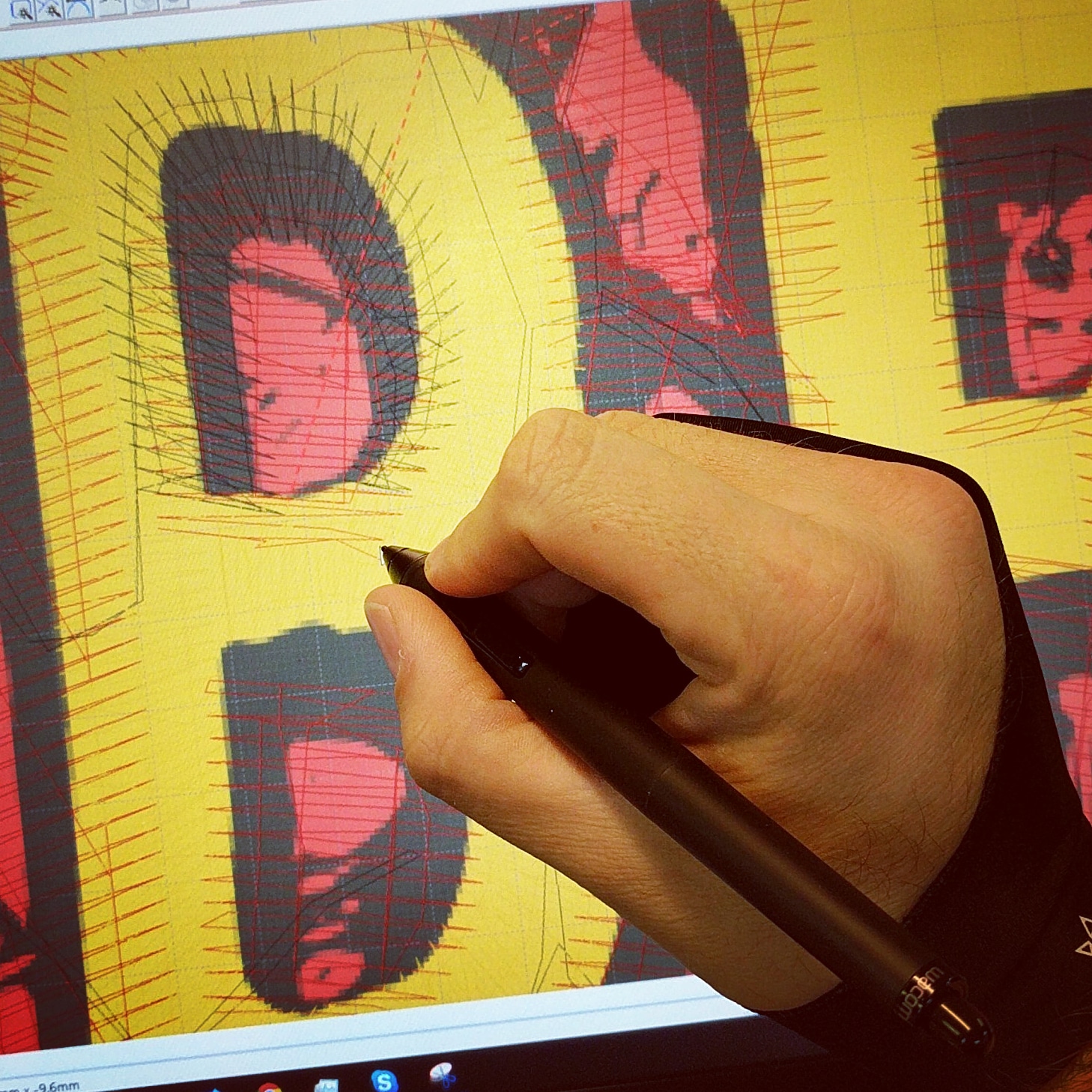Grasping the Embroidery Digitizing Process: Your Ultimate Guide
Needlework digitizing is a precise craft that calls for accuracy and proficiency to convert intricate designs right into electronic layouts for equipment needlework. As craftsmens begin on this journey to grasp the embroidery digitizing process, an extensive understanding of the fundamentals sets the structure for quality.

Recognizing Needlework Digitizing Essentials
Needlework digitizing essentials form the foundation whereupon intricate designs are equated into machine-readable formats for accurate stitching. This initial action in the embroidery digitizing process is crucial for ensuring that the final stitched product is a loyal depiction of the initial style. Recognizing needlework digitizing essentials entails realizing vital principles such as stitch kinds, stitch direction, density, underlay, and pull compensation.
Sew kinds play an essential duty in figuring out the visual and textural result of the embroidered design. By selecting the appropriate stitch kind, whether it be satin, fill, or running stitch, digitizers can attain the wanted impact and improve the general high quality of the needlework. In addition, sew instructions influences the flow and measurement of the layout, while thickness determines the spacing and coverage of the stitches.
Moreover, rug stitching gives security to the design by safeguarding the fabric and avoiding distortion throughout the needlework process. Draw settlement is an additional vital factor to consider to combat the all-natural tendency of textile to contract when stitched. Grasping these embroidery digitizing basics is essential for producing professional-quality stitched products.
Selecting the Right Digitizing Software Program
Selecting the appropriate digitizing software program is a vital decision that considerably impacts the performance and high quality of the embroidery digitizing process. Digitizing for Embroidery. When choosing the right digitizing software program, it is necessary to consider factors such as the intricacy of layouts you plan to create, the user-friendliness of the software application, the level of customer assistance supplied, and the compatibility with your embroidery maker
There are various digitizing software program alternatives readily available out there, ranging from fundamental programs for novices to sophisticated software program for professional digitizers. Some popular choices consist of Wilcom EmbroideryStudio, Hatch Embroidery Software, and PulseID. These software plans supply a wide variety of devices and attributes to aid you produce elaborate designs with simplicity.
Before choosing, it is recommended to check out the various software application choices with complimentary tests or trials to establish which one ideal matches your demands. In addition, reading reviews and looking for referrals from skilled digitizers can supply beneficial understandings right into the toughness and weaknesses of each software application plan (Digitizing for Embroidery). By very carefully reviewing your requirements and comparing the functions of various digitizing software program, you can make an enlightened selection that boosts your embroidery digitizing workflow
Digitizing Tools and Techniques

Optimizing Layout Settings for Needlework
Understanding the ins and outs of layout setups is essential in attaining ideal results in the needlework digitizing process, structure upon the structure laid by recognizing digitizing devices and techniques. When optimizing layout setups for needlework, visit this website it is vital to think about aspects such as stitch type, density, rug, draw compensation, and enrollment. Enrollment settings line up various aspects of the layout accurately, keeping total design honesty.

Troubleshooting Common Digitizing Issues
When running into usual digitizing problems throughout the embroidery process, it is vital to recognize the origin and implement reliable remedies immediately. One typical problem is stitch thickness problems, where stitches may be too dense, triggering the textile to pucker, or too thin, resulting in gaps in the layout. Changing the stitch thickness setups in the digitizing software program can assist fix this problem.
An additional regular challenge is string breaks throughout the embroidery process. This can happen as a result of different factors such as inaccurate tension settings, dull needles, or making use of low-quality thread. Making certain appropriate upkeep of the embroidery maker, consisting of routine needle adjustments and tension modifications, can minimize the incident of string breaks.
Additionally, style registration errors can lead to misaligned components within the needlework style. Examining the layout positioning in the digitizing software program and making essential modifications prior to stitching can aid in preventing this concern. By addressing these common digitizing problems without delay and successfully, you can guarantee a smoother needlework process and top notch completed products.
Final Thought
In final thought, mastering the needlework digitizing process requires a solid understanding of the basics, the appropriate selection of software program, and expertise of tools and techniques. Optimizing style home settings and repairing common digitizing issues are crucial actions in making certain premium embroidery outcomes. By adhering to these steps diligently, one can accomplish accuracy and effectiveness in the digitizing process.